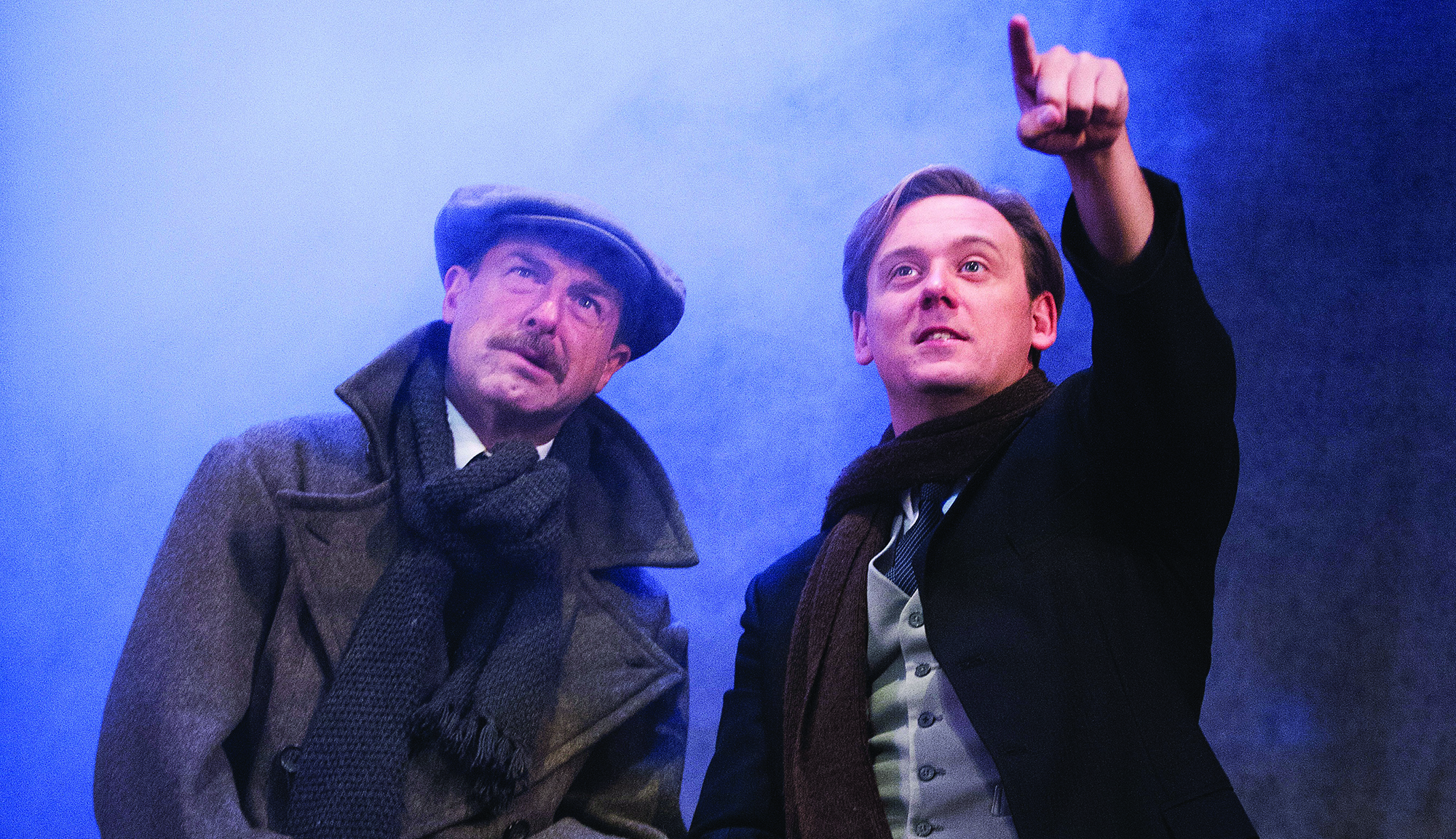Preview:
The Woman
in Black
Andy Murray talks to Antony Eden about a new production of The Woman In Black and why the Broadway hit still provides thrills
Back in 1987, playwright Stephen Mallatratt and director Robin Herford created a stage adaptation of Susan Hill’s Victorian ghost story The Woman In Black. It’s fair to say that the project exceeded all expectations. Twenty-five years later The Woman In Black remains a staple of West End theatre-land, and a special anniversary production is now touring the UK.
Antony Eden first saw the play when he was a 14-year-old aspiring actor, and became entranced.
“I wrote to Stephen and Robin and got permission to put it on at school. So I’ve lived with the play for maybe 18 years.”
Now a professional actor, Eden is one of the two performers in the current production.
“And I play the same role now that I played then.”
For the uninitiated, the titular woman is a deceased former inhabitant of Eel Marsh House. Upon the death of Mrs Drablow, its latest owner, young solicitor Arthur Kipps is summoned from London to settle her affairs. Alone in the house, cut off from the mainland by a marshy causeway, Kipps sifts through Drablow’s belongings and gradually unearths the terrible secrets of the house.
The conceit of the stage version is that an older Kipps arrives at a theatre desperate to tell his tale. “He turns up with a book that he’s written about what happened to him. He’s never been able to tell his family what horrors he’s been through. So he takes it to an actor to see if he can help him put it on, as a means of telling them.”
Featuring as it does just Kipps and the actor, the result is a two-man show (although you may not be entirely surprised to hear that one particular woman makes her presence felt, too).
Simply, the key to the play’s success is this: it’s scary. Proper, full-blown leave-the-landing-lights-on-and-lie-in-bed-imagining-things scary. In the surround-sound, wide-screen TV and film age, the notion of being petrified in a theatre might seem quaint, but seeing The Woman In Black really is a nerve-jangling experience.
“It uses your imagination as an audience so much. It has to. You can’t represent a big scary house with several levels and a marsh on the stage, so you’re explicitly asked by the play to imagine it.”
The degree to which viewers submit to this determines the extent of their fear. “It can be extremely scary, because it becomes your own particular spooky house that you create in your own head, with your own private fears,” he says.
This year, the public’s interest in all things The Woman In Black has been piqued by the film version starring Daniel Radcliffe. What did Eden make of it?
“I did enjoy it. It’s just so different from the play, and the book, that it feels like a completely different story in some ways. There are more laughs in the play. It was nice being able to see the house, as you can in a film. Then again, it’s not quite how I imagined it in my head for the play. It was a bit of a strange experience.”
The tour has only just got under-way – “We finish halfway through June next year so there’s a lot of screams to go yet” – but Eden is sure that it can remain fresh. “With this show, because the audience play such an important part, it changes massively every time. It changes according to the personality of the collective audience watching it.”
In that respect, The Woman In Black represents a gratifyingly pure theatre experience. He says: “It’s that communal experience where everybody’s in the same room together at one moment. I feel it on the stage. As the audience gets more tense, I get more tense, and as I get more tense the audience gets more tense. It feeds off itself. The fear is contagious.”
The Woman in Black, 5 – 10 November, Sheffield Lyceum

Leave a reply
Your email address will not be published.